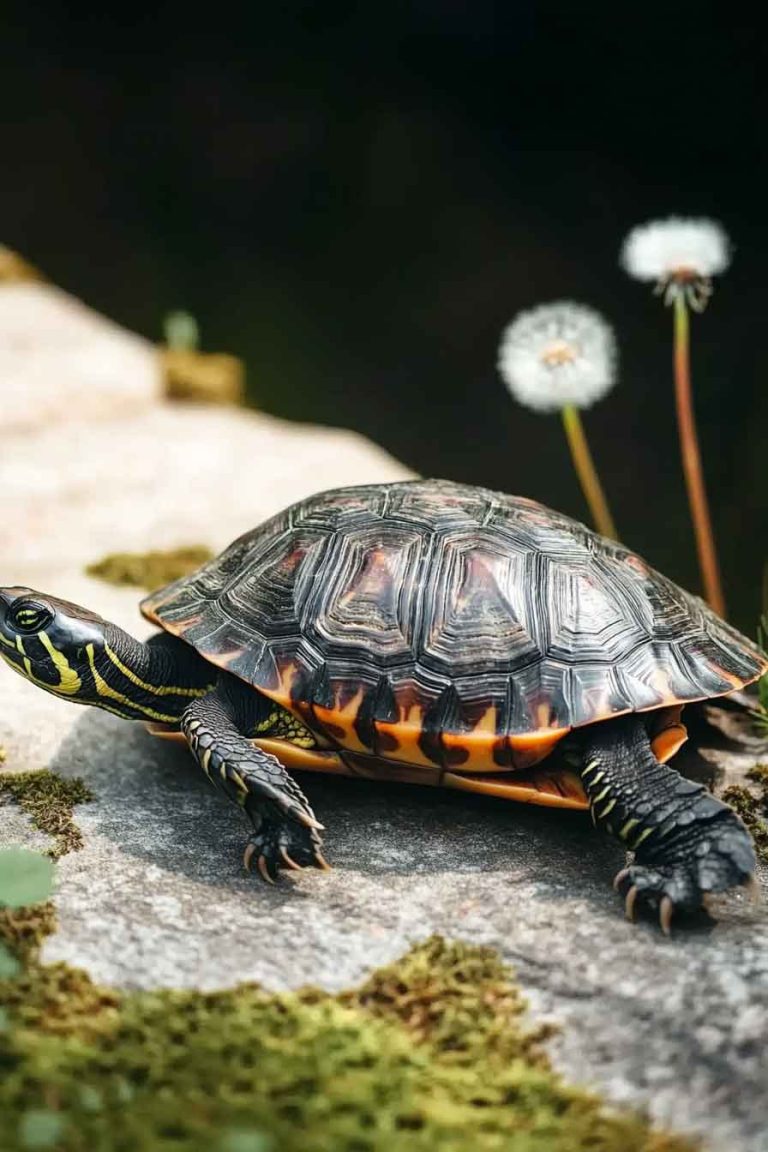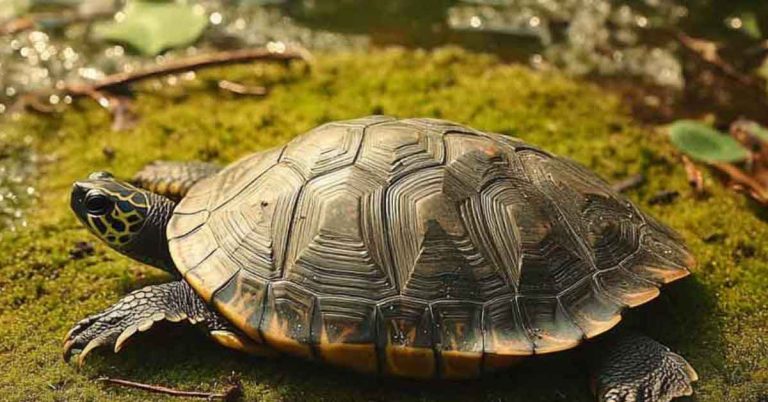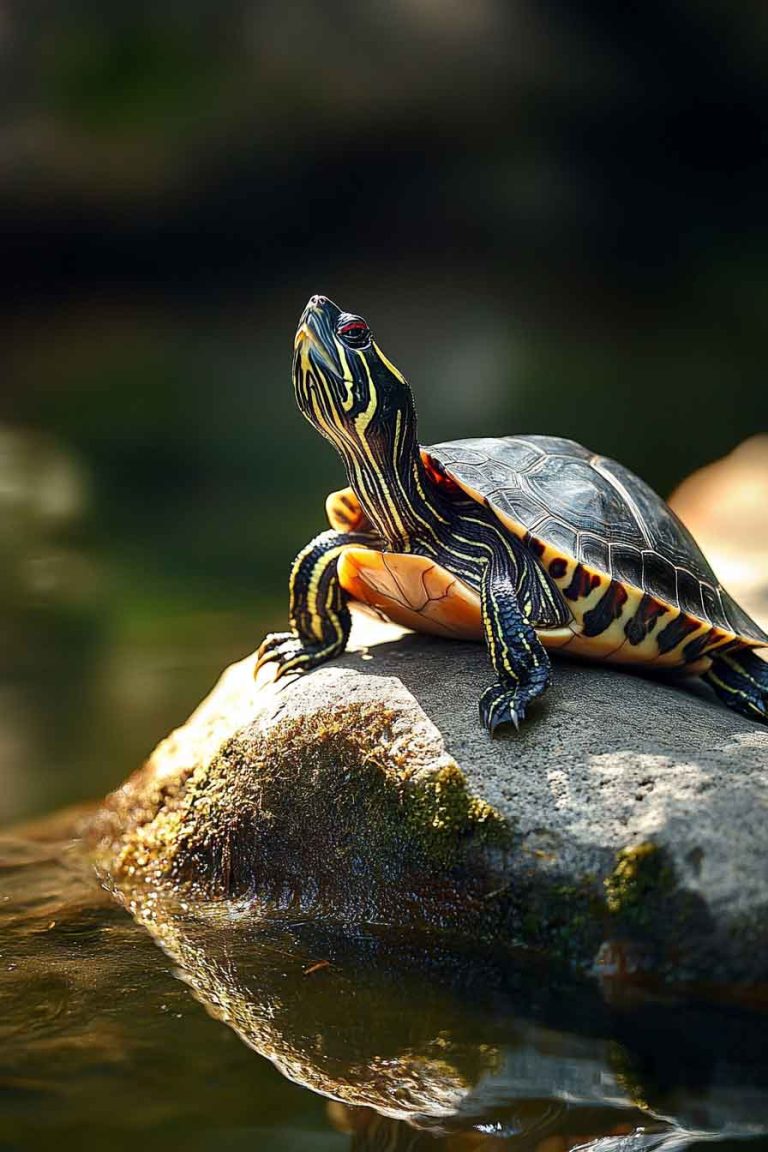How to Prevent Injuries in Pet Turtles: Safe Habitat Tips and Signs to Watch For
When I first brought home my turtle, I thought its hard shell meant it couldn’t get hurt. But wow, was I wrong. One day, I saw my turtle fall off a tall rock in the tank—and that’s when I realized just how easy it is for turtles to get injured. Turtles may look strong, but…
When I first brought home my turtle, I thought its hard shell meant it couldn’t get hurt. But wow, was I wrong. One day, I saw my turtle fall off a tall rock in the tank—and that’s when I realized just how easy it is for turtles to get injured.
Turtles may look strong, but they are actually pretty delicate in many ways. Their shells protect them, sure—but only up to a point. They can still hurt their legs, tails, heads, and even the inside of their shells. I’ve learned over time that most injuries happen not from big accidents—but from small things we don’t notice.
So, in this post, I’m going to tell you everything I do now to keep my turtle safe. These are simple things, but they make a huge difference.
Can Turtles Really Get Injured That Easily?
Yes, they really can. I used to think that turtles were kind of like little armored tanks—slow but super strong. But after a few close calls (and one vet visit), I started to understand just how vulnerable they are.
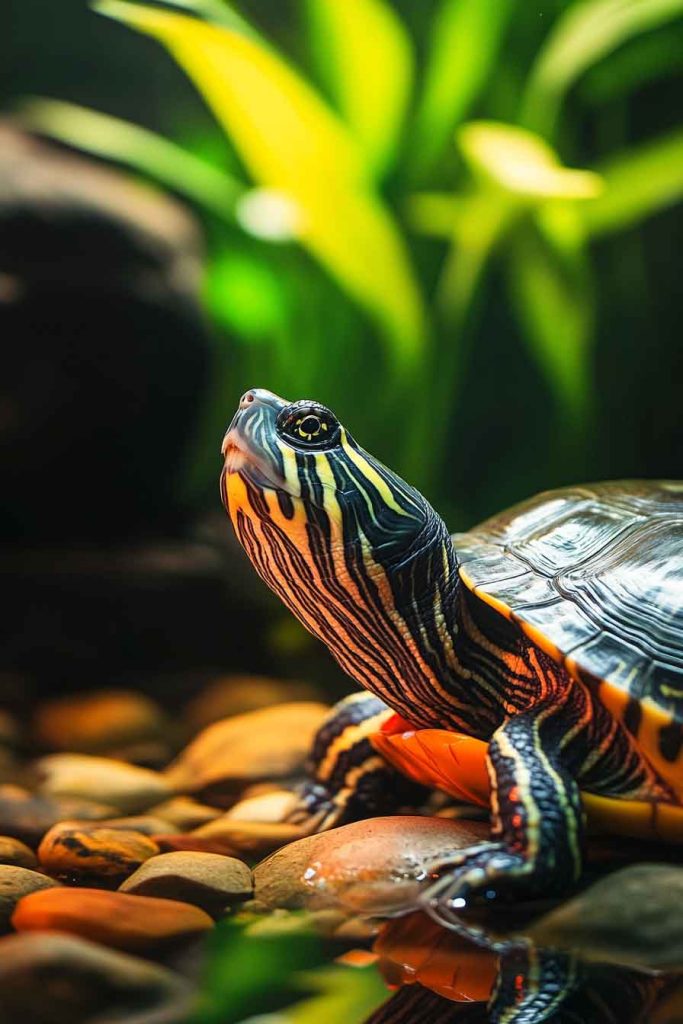
Pet turtles often get hurt in these ways:
- Falling off rocks or ramps
- Getting pinched by tank mates
- Getting stuck behind or under decorations
- Getting burned by heat lamps that are too close
- Injuring their shells from rough surfaces
- Eating something sharp or harmful
I’ve even seen turtles get injured from too much handling or being dropped during cleaning. These aren’t wild animals anymore—they rely on us to keep their space safe.
Most Common Injuries in Pet Turtles
Let me tell you about the kinds of injuries I’ve seen—or learned to prevent—while raising turtles over the years.
1. Shell Cracks or Chips
This is the one I feared the most. Shell injuries usually happen when a turtle falls from a height or hits something sharp. My turtle once slipped while climbing a rock ledge and landed on the tank bottom—hard. Luckily, no crack—but it was close.
Shell cracks can get infected fast, so always check your turtle’s shell for any soft spots, flaking, or discoloration.
2. Burns From Heat Lamps
This one surprised me. I didn’t realize the heat lamp was too low until I saw my turtle staying too long under it. The skin on his neck looked red—almost like a sunburn. Now I always check the distance between the lamp and the basking area. A good rule? Keep the lamp at least 10 to 12 inches away from the turtle’s shell.
3. Cuts and Scrapes
Sharp tank decor is a big danger. Things like jagged rocks, plastic plants with hard edges, or cracked hides can leave tiny cuts that easily get infected. I once had to throw out a cool-looking decoration because my turtle kept rubbing against it and scratching his leg.
4. Leg and Claw Injuries
Sometimes turtles get their claws stuck in filters, rocks, or even between tank glass and lids. One of mine broke a nail from climbing the wrong way. It bled a little, but it healed. Now I check the enclosure every week for small gaps or traps.
5. Bite Marks from Tank Mates
If you keep more than one turtle, biting can happen—especially over food or territory. I had to separate two turtles once because one kept nipping at the other’s tail. Even peaceful turtles can fight if space is too small or food is limited.
How I Prevent Injuries in My Turtle’s Habitat
Once I realized how easily turtles can get hurt, I made a few big changes to my setup. And honestly? It made a huge difference. Here’s what I do now to make sure my turtle’s space is safe and injury-free.
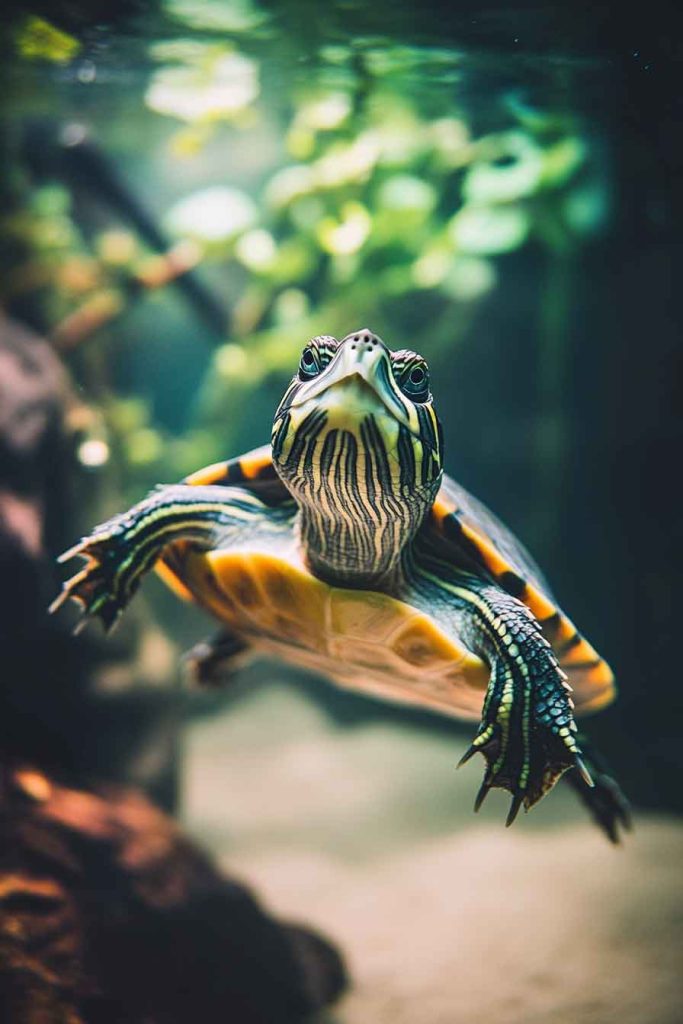
1. I Keep the Basking Area Low and Safe
I used to stack a bunch of rocks to make a high basking spot. It looked cool—but it was risky. Now, I use a wide, flat platform with a gentle ramp. It’s easy for my turtle to climb, and if it slips, it won’t fall far. No more sharp corners. Just smooth, sturdy surfaces.
I also check every few days to make sure the ramp isn’t wobbly or slippery. Turtles can’t grip well on smooth plastic, so I add textured pads or rubber strips for better footing.
2. I Use a Safe, Soft Substrate
Hard gravel or sharp pebbles? Not anymore. I’ve switched to smooth river rocks or fine reptile-safe sand. It’s easier on their feet and claws, and it doesn’t trap their legs like jagged gravel sometimes can.
If you use bare glass or tile bottoms, just be careful—it can be slippery. I had to use a mat once because my turtle kept sliding and hurting its leg while trying to walk.
3. I Watch the Heat Lamp Distance
This one is super important. I used to guess how close the lamp should be. Now, I measure it. I keep the bulb about 10 to 12 inches above the basking spot and use a thermometer to make sure the surface doesn’t get too hot—around 90–95°F is perfect for basking.
Also, I never leave the lamp uncovered or exposed. I use a proper lamp dome with a guard so my turtle can’t accidentally bump into it or flip something into it.
4. I Inspect Decorations and Hides Weekly
Every weekend, I do a quick check. I look at:
- Sharp edges
- Loose parts
- Places my turtle could get stuck
I once found my turtle wedged behind a rock for hours. Now I make sure every decoration is either too small to get behind or wide enough for easy entry and exit.
5. I Separate Aggressive Turtles When Needed
I really wanted my turtles to be tankmates—but it didn’t work out. One kept biting the other’s tail, even after I tried feeding them in separate spots. So now they live in their own tanks. They’re both calmer, healthier, and happier.
If your turtle is getting picked on or bullied, don’t wait—separate them before it gets worse. Injuries from bites can get infected fast, especially if they happen near the tail, legs, or neck.
Bonus Tips That Help Me Avoid Accidents
In addition to the setup, here are a few small things I always do now:
- I never pick up my turtle with one hand. Always two hands—one under the shell and one gently on top.
- I clean the tank on the floor. No more lifting tanks high where they could fall.
- I wash my hands and the turtle’s wounds right away if I notice any scratch or bump. Even a tiny scrape can turn into something worse.
- I don’t use glass tanks with sharp corners. If I have to, I line the edges or corners with foam padding.
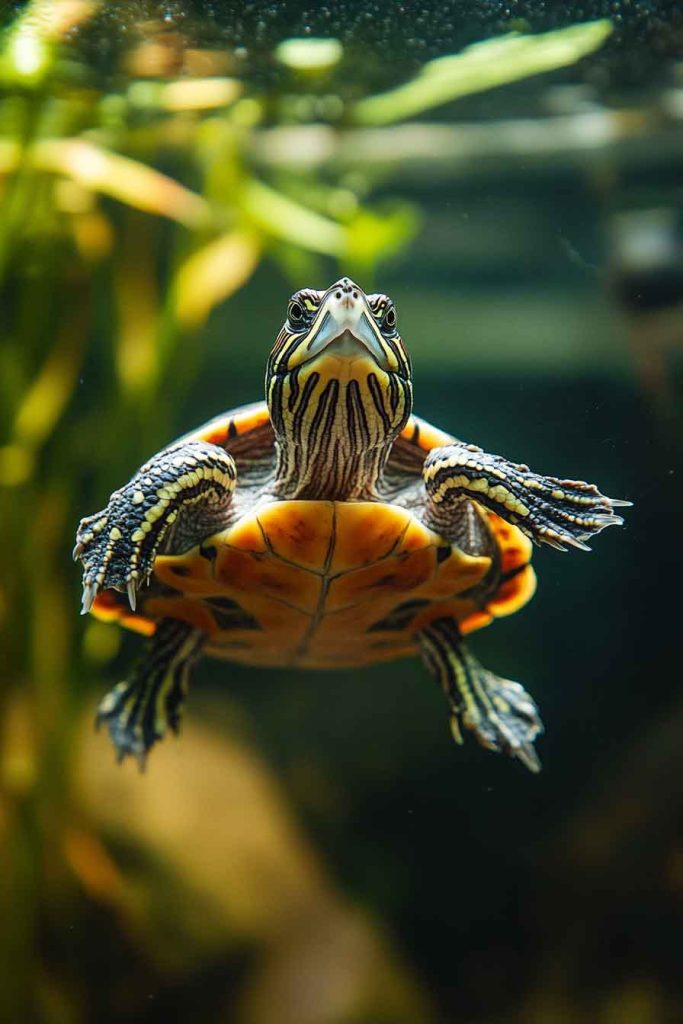
Signs That Your Turtle Might Be Hurt
Even with all the prevention steps, it’s still important to know what injury signs to watch for. Turtles don’t cry or yelp, so we have to pay close attention to their body language and behavior.
Here are some signs I’ve learned to watch out for:
1. Limping or Not Walking Right
If your turtle is dragging a leg or avoiding movement, something might be sore—or worse, sprained or broken.
2. Shell Damage
Cracks, chips, soft spots, or white marks on the shell could be signs of injury or even infection. I run my hand gently over the shell once a week to check for anything unusual.
3. Bleeding or Cuts
Bleeding is never normal. If I ever see red marks, cuts, or scrapes—especially on the legs, neck, or tail—I clean it right away and watch it closely.
4. Staying Still Too Long
If your turtle won’t leave the same spot for hours or skips basking for days, it might be in pain. That’s a red flag for me to start looking closer.
5. Not Eating
When my turtle skips meals, I always take a second look. Injuries can make eating painful or stressful, especially mouth or jaw problems.
When I Call the Vet (And You Should Too)
Sometimes, you can handle little things at home—like a mild scratch or a small bruise. But there are moments when it’s time to call a reptile vet.
Here’s when I reach out for help:
- If there’s a deep cut or the shell is cracked
- If my turtle is bleeding and it doesn’t stop
- If my turtle hasn’t moved or eaten in days
- If there’s swelling, infection, or pus
- If I just feel unsure—because it’s always better to be safe than sorry
A good reptile vet will know how to treat turtle wounds safely. They can clean, patch, and even give meds if needed.
FAQ: Injury Prevention in Pet Turtles
1. Can I keep two turtles in the same tank?
Sometimes—but only if they get along. I’ve had to separate turtles before because of biting and bullying. Always watch for signs of aggression.
2. What kind of decorations are safe?
Stick to smooth, rounded items. Avoid anything with sharp edges, points, or holes small enough for your turtle to get stuck in. If it looks dangerous, it probably is.
3. How do I pick up a turtle without hurting it?
Always use two hands—one under the shell and one on top. Never pick a turtle up by its legs or tail. That can cause serious damage.
4. How high should basking spots be?
Not high! Keep them low and stable. I try to make sure my turtle only climbs a few inches above water or ground level. A short fall is much safer than a tall one.
5. Should I give my turtle soft bedding?
Yes, especially for land turtles or tortoises. Soft, loose, and clean bedding—like coconut fiber or soil—keeps their feet and claws from getting hurt. For aquatic turtles, smooth rocks or sand work best.
Final Thoughts
Turtles are tough little creatures, but they still need our help to stay safe. I’ve learned that most injuries can be prevented just by watching closely, setting up their home right, and staying on top of small problems before they grow.
If your turtle ever gets hurt, don’t panic. Stay calm, clean the wound, and call a vet if needed. But more importantly—use what I’ve shared to help prevent those injuries in the first place.
Your turtle depends on you. And with just a little extra care, you can give them a safe, happy home for years to come.



